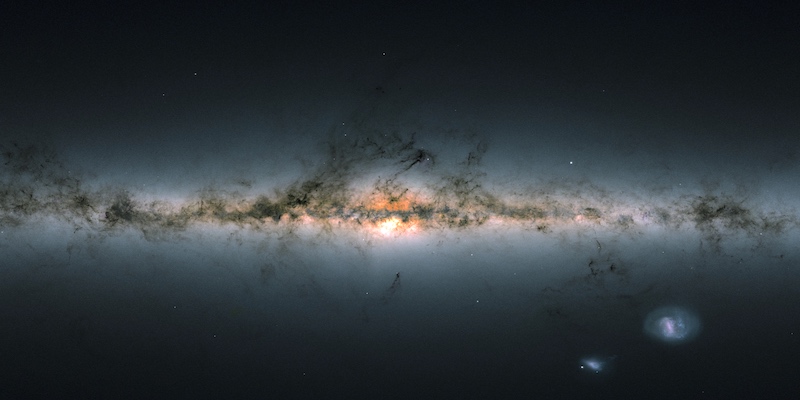
The Evolving Syllabus:
1. Astronomy as a science
Quick early history.
Relation to physics.
Types of observations.
Limitations of our observations.
2. Starting the exploration
Units, distances, and parallaxes.
Overview of structures and scales.
Newtonian gravity, Kepler's laws.
Celestial coordinates, time.
3. Telescopes and detectors
History of telescopes.
Geometric optics.
Detectors (UV, vis, IR).
Radio telescopes.
X-ray and gamma-ray telescopes and detectors.
Non-EM messengers.
4. Electromagnetic radiation processes
Blackbody radiation.
Spectra, Kirchoff's laws, atomic transitions.
Non-thermal mechanisms.
Magnitudes and fluxes.
5. Interstellar medium, the birth of stars and planets
ISM phenomenology and properties.
Star formation.
Planetary system formation.
6. Solar system
Solar system overview.
A quick description of the major components.
Formation of the Solar system.
Planetary atmospheres.
7. Planets beyond the Solar system
Thermodynamics of planets.
Exosolar planetary systems.
Life in the universe.
8. Stellar structure, Sun
Basic considerations.
Energy generation.
Energy transport.
Our Sun.
9. Stellar evolution, star clusters
HR diagrams, main sequence.
Star clusters.
Evolution past the main sequence.
10. Endpoints of stellar evolution
White dwarfs. Contact binaries.
Supernovae. Supernova remnants.
11. Extreme objects: neutron stars and black holes
Neutron stars and pulsars.
Stellar black holes.
Gamma-Ray Bursts.
Supermassive black holes galactic nuclei.
Gravitational wave astronomy.
12. Galaxy
Overall structure, major components, stellar populations.
Kinematics, rotation, dark halo.
Spiral structure, stellar dynamics.
Local group, evidence of hierarchical assembly.
13. Galaxies and their properties
Hubble sequence, variation of properties.
Structural and dynamical properties.
Correlations.
14. Galaxy formation and evolution
Formative and evolutionary processes.
Protogalaxies.
Evolution.
Observations.
History of galaxy assembly and star formation.
15. Large scale structure, its formation and evolution
Gal. clustering.
Surveys.
Large scale structure.
Origins and evolution.
Clusters of galaxies.
16. Active Galactic Nuclei (AGN)
Definitions, structure, unification.
SMBHs and fueling.
Jets and high-energy phenomena.
Evolution.
Formation and co-evolution with galaxies.
17. Cosmology: basics, expansion
The universal expansion.
Cosmological redshift.
Cosmological models and parameters.
Distances in cosmology.
18. The early universe, cosmic microwave background
Some basic ideas about the physics of the early universe.
The Cosmic Microwave Background.
The Big Bang Nucleosynthesis.
The cosmic inflation.
The very early universe.
19. Distance scale and age, cosmological tests
The distance ladder.
Stellar distance indicators and Cepheids.
The HST Hubble Constant Key Project.
Distance Indicator relations.
The age of the universe.
Cosmological tests.
Tests for the expansion of the universe.
Supernova standard candles and the Hubble diagram.
CMB cosmology and the angular diameter test.
20. Dark matter and dark energy, concordance cosmology
